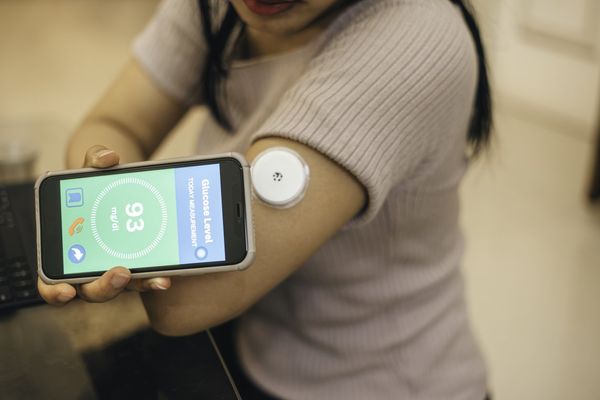According to the American Diabetes Association, the incidence of diabetes increased by more than 13.5 percent from 2005 to 2007. The number of Americans with diabetes is growing by an alarming eight percent per year, and the disease is the single most prevalent chronic illness in children.
According to the American Diabetes Association, diabetes is developing at younger ages in high-risk groups.
Symptoms of type 1 diabetes include increased thirst and urination, constant hunger, weight loss, blurred vision and extreme tiredness.
The symptoms of type 2 diabetes appear gradually and are vaguer than those associated with type 1 diabetes. Symptoms include feeling tired or sick, frequent urination (especially at night), unusual thirst, weight loss, blurred vision, frequent infections and slow wound healing.
If you are 45 or older, you should be tested for diabetes. A normal initial test should be followed up with retesting at three-year intervals or at the frequency recommended by your health care professional based on other risk factors.
For individuals at high risk for developing diabetes, the guidelines issued by ACE and AACE recommend that screening begin at age 30. Any one of the following risk factors can increase your chances of developing diabetes:
- being more than 20 percent above your ideal body weight
- having a first-degree relative with diabetes (mother, father, sibling or child)
- being a member of a high-risk ethnic group (African American, Native American, Alaska native, Asian and Pacific Islander American, or Latino/Hispanic American)
- delivering a baby weighing more than nine pounds or having diabetes during a pregnancy
- having blood pressure at or above 140/90 mm/Hg
- having abnormal blood fat levels, such as high-density lipoproteins (HDL) less than or equal to 35 mg/dL or triglycerides greater than or equal to 250 mg/dL
- having polycystic ovary syndrome
- test results showing impaired glucose tolerance or impaired fasting glucose (between 100 and 125 mg/dL after an overnight fast) and a blood glucose level of 140–199 mg/dL two hours after drinking the glucose drink provided in the oral glucose tolerance test (OGTT). This condition, termed "prediabetes," is now recognized as a risk factor for developing diabetes later in life.
If you are pregnant, you should be tested for gestational diabetes during the 24th to 28th weeks of pregnancy if you are over 25, overweight, have a family history of diabetes or are a member of a high-risk ethnic group.
For those at risk, consultation with a health care professional and testing are the next steps. Be sure to tell your health care professional if you are taking any medications. Certain drugs, including glucocorticoids, furosemide, thiazides, estrogen-containing products, beta blockers and nicotinic acid, can result in high blood sugar levels.
For an accurate diagnosis, you should go to a health care professional's office or medical lab to have a fasting blood glucose sample taken. While finger-stick screenings—the kind given at mobile health fairs—are more convenient and cheaper, they are less reliable and precise and must be confirmed by medical lab testing. A fasting finger-stick test result of 110 mg/dL or more should send you to a health care professional for further testing. If you've eaten shortly before the finger-stick test, see a health care professional if your reading is 140 mg/dL or higher.
The easiest, most economical test for diabetes is one that measures fasting plasma glucose. This blood test is usually done in the morning, after an overnight fast, at a health care professional's office or lab. The normal, nondiabetic range for blood glucose is from 70 to 99 mg/dL. A level over 126 mg/dL usually means diabetes (except for newborns and some pregnant women). A fasting blood glucose test of 99 mg/dL or greater, but less than 126 mg/dL, indicates impaired fasting glucose, now recognized as prediabetes.
Another blood test, the so-called "casual" or random plasma glucose test, can be taken any time of day. Diabetes is indicated if your glucose level is greater than or equal to 200 mg/dL and you have symptoms such as increased thirst and urination, constant hunger, weight loss, blurred vision and extreme tiredness in the case of type 1 diabetes, and feeling tired or ill, frequent urination (especially at night), unusual thirst, weight loss, blurred vision, frequent infections and slow wound healing in the case of type 2. An oral glucose tolerance test (OGTT), which takes three hours and involves three to six blood samples, is also available; its value lies in measuring how glucose levels change in response to a high glucose load.
A positive reading on any of these tests should be followed up with a second test on a different day to confirm the diagnosis. A positive finger-stick test should be followed with two of the venous tests to confirm a diagnosis.







